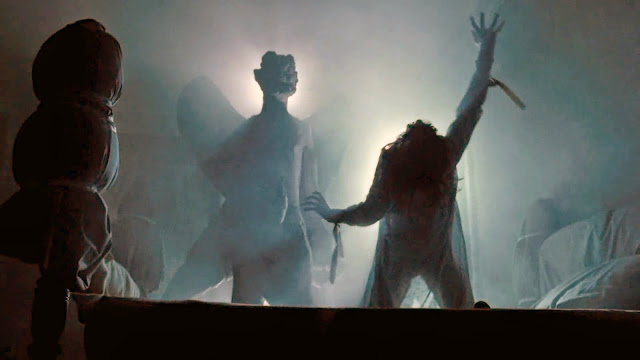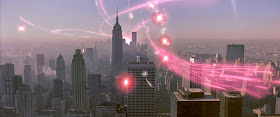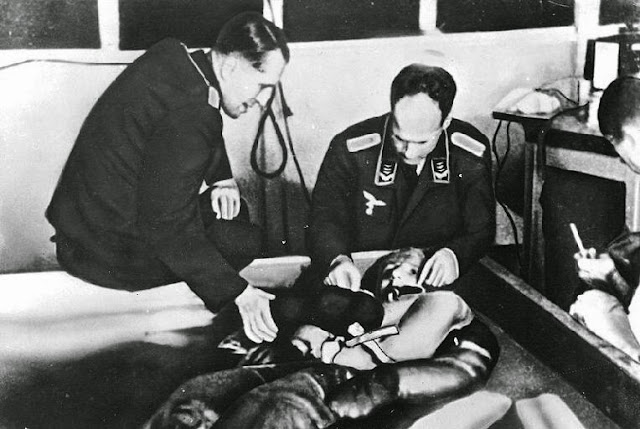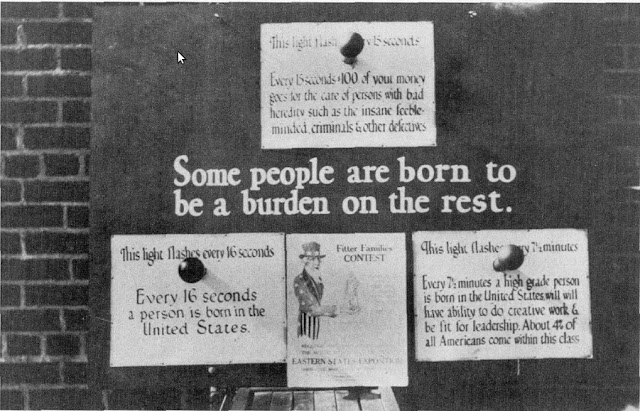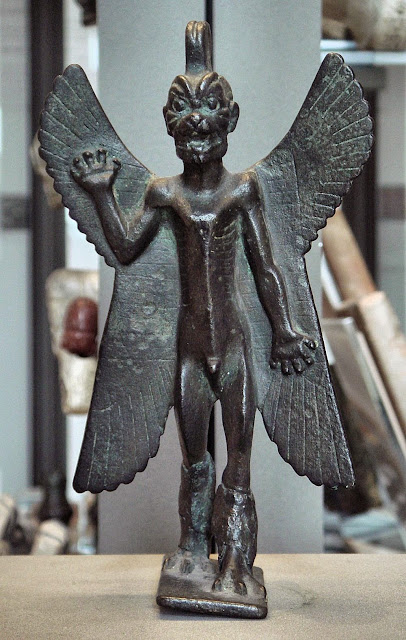[Was Ralph's case different from all of the other cases you've tried?]
... One of the biggest hurdles for the DA ... is that he had this history. From our perspective, the part that was most troubling about it is that he had gone around warning people that the exact type of thing that was going to happen was going to happen. At one point, he even went into the state police barracks, and told him that the microchip was telling him to do this or telling him to do that. ... He had gone to the health professionals at SUNY and told them that he had the chip implanted, that it was telling him to do things and he was trying not to listen to it. ...
Gunman Terrorizes Students in Campus Siege
ALBANY, Dec. 14— Thirty-five students at the State University here showed up this morning for the last day of class in the History of Ancient Greece, expecting the usual fare, bloody but distant: wars, empire, Alexander the Great.
Instead, the police said, they were held hostage for two and a half hours by a rifle-wielding psychology student who ranted about a microchip in his brain, threatened to kill the students and demanded to speak to President Clinton, Gov. Mario M. Cuomo, members of Congress, the university president and financial-aid officials. The standoff ended when a 19-year-old sophomore from Long Island lunged at the gunman, who shot and wounded him before others in the class wrestled him to the ground.
The Albany police arrested Ralph J. Tortorici, 26, and charged him with attempted murder. As he was led from the lecture hall by police officers, Mr. Tortorici, wearing a blue blood-stained sweat shirt and camouflage fatigues, shouted at a crowd of student bystanders, "Stop government experimentation!"
The standoff began just after 9 A.M. as Prof. Hans Pohlsander was starting his history lesson on ancient Greece in one of the two dozen lecture halls that lie underneath the campus's central quadrangle.
As Mr. Pohlsander scanned the hall, he saw Mr. Tortorici standing in the rear and asked him, "Are you part of the class?" At that moment, Mr. Tortorici pulled a .270-caliber Remington rifle from a duffel bag, the police said. He was carrying over two dozen rounds of ammunition in the bag, the police said.
"He said: 'Don't worry. Nobody move. You guys are getting held hostage,' " said Lisa Cramer, an 18-year-old sophomore from Rensselaer who was among the hostages. "Stuff you see in movies."
The injured student, Jason McEnaney, 19, of Hicksville in Nassau County, was shot in the upper leg, groin and abdomen as he grabbed Mr. Tortorici's rifle, dislodging it from his grasp. The police say that one bullet apparently caused all of Mr. McEnaney's wounds. He was listed in serious condition after undergoing surgery at Albany Medical Center Hospital this afternoon.
"He was a hero," Joel Blumenthal, a spokesman for the State University's Albany campus, said of Mr. McEnaney. "He took a risk and saved people's lives."
Police officials said Mr. Tortorici's motives were unknown because he made no specific demands other than to speak to various political and university officials. They described the gunman, whose only known address was a Schenectady post office box, as angry and irrational throughout nearly two hours of negotiations.
"At one time he said that if his demands were not met, he would start killing people," said Major Lloyd R. Wilson Jr. of the State Police Department.
Several hostages said Mr. Tortorici told them that he believed that a computer chip had been implanted in his brain at birth by doctors at Albany Medical Center as part of an experiment. "He said his actions were being governed through a microchip," said Ms. Cramer. "He was basically mad because they wouldn't give them his degree or something."
Saying the college has been criticized for lax security in recent weeks, another hostage, Robert Urban, said, "At first, a lot of us thought it was a test of the internal security system of the university."
Brandishing his weapon and nervously pacing the center aisle, Mr. Tortorici ordered students to barricade the doors to the subterranean room with desks and chairs. He also had one student squirt a fire hose into the hallway outside for several seconds before making him tie the door closed with the hose.
"He said he wanted to flood the university," said the student, Scott Gushlaw, a 25-year-old senior from Troy. "He never said why."
When two students began crying hysterically, he allowed them to leave. He also released Mr. Pohlsander and three other students, demanding that they deliver messages to Mr. Clinton and other officials, as well as to local news reporters, two of whom he asked for by name.
Mr. Pohlsander alerted campus police about the gunman, and by about 9:30 A.M., dozens of city and state police had arrived at the scene. Three police negotiators took up positions in a projection room overlooking the lecture hall, concealed from Mr. Tortorici by a screen. At one point, the gunman fired a shot through the screen, barely missing two of the negotiators.
Several hostages described Mr. Tortorici as agitated when he talked to the police negotiators, using a microphone in the lectern to amplify his voice. But at other times he was calm and even lighthearted with the students, offering them cigarettes, demanding that the police bring them snack food and sodas and designating a corner of the room as a latrine.
"He walked by and looked at one of my books and said: 'Greek? Why do you want to take that?' " Mr. Urban said.
Throughout the standoff, Mr. Tortorici eyed Mr. McEnaney nervously, several times warning him to stand still. "He kept telling Jason, 'You better quit moving around or I'm going to shoot you in the head,' " Mr. Gushlaw said. "That's why Jason went after him, because he knew his life was in danger, there's no doubt about it."
The end came around 11:30 A.M., when Mr. Tortorici ordered Mr. McEnaney to separate from two other students and stand near the front of the room behind a makeshift barricade. As Mr. McEnaney passed the gunman he grabbed his rifle, witnesses and the police said. Mr. Tortorici fired several shots, at least one of which hit Mr. McEnaney, before losing his grip on the weapon, which tumbled to the floor.
As Mr. McEnaney scrambled away, Mr. Tortorici retreated toward the back of the room, reaching for a hunting knife that had been concealed in his belt. But before he could draw it, a student kicked him in the face and another pushed him into a wall. Three others helped hold him down as scores of heavily armed police officers poured into the room.
Mr. Tortorici's right hand was cut in the scuffle and he also received bruises to his chest, face and hands. He was admitted to Albany Medical Center for treatment to his hand this evening.
Little was known about Mr. Tortorici tonight. Several hostages said he said he was in the military reserves, but the police could not confirm that. University officials said he entered the college in 1990 and had enough credits to be a senior. They said they had no record of any conflicts involving him and the university.
Police officials said their only brush with Mr. Tortorici, whose parents live in the Albany region, was on Nov. 29, when they arrested him for possession of a small amount of crack. They said he did not have any drugs in his possession today and did not appear under the influence of drugs or alcohol when he was taken into custody.
The 17,000-student campus at the edge of Albany was thrown into pandemonium for much of the day. Classes were canceled, hundreds of students milled about the hostage scene and the university telephone switchboard malfunctioned, overloaded with calls from worried parents.
This was the second incident in recent weeks to disrupt campus life. Two weeks ago, a white freshman claimed that she had been beaten in her dorm room by a black man. Several days later, the police arrested her father for the attack, saying that the woman fabricated the story to protect him. The incident sparked a highly publicized debate about racial tensions at the school.
Mr. Blumenthal, the college spokesman, said that today's canceled classes would be rescheduled for Thursday and that faculty had been asked to postpone final exams, scheduled to begin Friday, where possible.
"It's been a ruckus around here," said Debra Guss, a 21-year-old senior from Staten Island. "It feels like everything happens to us."
Photos: Ralph J. Tortorici is led out of a lecture hall in Albany yesterday, after a two-and-a-half-hour standoff involving hostages. (Alan E. Solomon for The New York Times); Jason McEnaney, who was shot trying to subdue a man accused of holding State University students hostage. (pg. B1) Map/Diagram: "THE SCENE: Shooting at SUNY Albany" The hall where the shooting occurred is underground at the center of the campus. It is one of several lecture halls grouped around a sunken reflecting pool and fountain. 1. The gunman, indentified as Ralph J. Tortorici, 26 entered Room 5 with a rifle; he moved to the center of the room and ordered the students from their chairs. 2. The students gathered at the front of the room and toward one side. 3. Jason McEnaney, 19, after being asked by the gunman to move to the front, headed toward the center aisle. Once near the gunman, he struggled with him. In the scuffle, Mr. McEnaney was shot at least once. 4. Five more students helped subdue the gunman. Map of the campus shows the location of the hall where the incident occurred, and a diagram of the hall itself is provided showing the approximate positions of the gunman and the students. (B10) Map of Albany shows the site of the shooting. (pg. B10)

Man Sentenced in Albany Hostage Drama
ALBANY, Feb. 16— A man convicted of holding students hostage at the State University at Albany and shooting one of them was sentenced today to consecutive terms totaling 15 2/3 to 47 years.
The man, Ralph Tortorici, 27, was not present at his sentencing for first-degree assault, second-degree kidnapping and first-degree reckless endangerment. Sentences for criminal use of a firearm and criminal possession of a weapon will run concurrently.
During comments by Justice Larry Rosen of State Supreme Court, Mr. Tortorici began muttering and was removed from the courtroom. Earlier, during his statement, Mr. Tortorici attributed his troubles to a Jewish conspiracy, and noted that Justice Rosen is Jewish.
Mr. Tortorici said he had taken the class hostage in order to inform people of a government conspiracy through which, he said, microchips had been planted in his body.
On Dec. 14, 1994, Mr. Tortorici, armed with a rifle, entered a SUNY Albany classroom and took 35 students and a professor hostage. After about two hours, a group of students, led by Jason McEnaney, jumped and restrained the gunman. Mr. McEnaney was shot in the groin and abdomen.
During the trial, Mr. McEnaney, 20, provided graphic testimony about his injuries, which resulted in his inability to father children. An alternate juror fainted during his testimony and was excused from duty.
Inmate Ralph Tortorici hangs self in prison cell
New York State
Department of Correctional Services
Glenn S. Goord, Commissioner
Office of Public Information
[518] 457-8182
www.doccs.ny.gov
For immediate release:
Tuesday, August 10, 1999
Inmate Ralph Tortorici ( # 96-A-1194), who held more than three dozen SUNY-Albany students hostage in a classroom in December of 1994, was found hanging in his cell at 4:48 a.m. today in the maximum-security Sullivan Correctional Facility in Fallsburg in Sullivan County, approximately 116 miles south of Albany.
A Correction Officer making rounds found Tortorici with an unaltered bedsheet tied around his neck and tied to a clothing shelf in his cell. A nurse was summoned from the prison infirmary. He was pronounced dead in the infirmary at 6:47 a.m. by the county coroner. Tortorici was last seen alive in his cell at 4:30 a.m. by an Officer making regular rounds.
As in all unattended deaths in state prison, an autopsy is pending and investigations are being conducted by the Department's Office of the Inspector General as well as by the State Commission of Correction.
Tortorici, 31, was received into the prison system on February 27, 1996, serving a sentence of 15 2/3-40 years on 10 counts - four of kidnaping, four of reckless endangerment, one of first-degree assault and one of first-degree criminal use of a firearm. All 10 charges stemmed from the incident at SUNY-Albany, during which he shot one student in the groin area and fired at least one round at the police officers who were attempting to negotiate his surrender and the release of the hostages. His original parole date was October 2, 2011, with a maximum expiration date of February 2, 2036.
Tortorici was housed at Sullivan because it is one of the prison system's nine general confinement facilities for males offering "level one" care by the state's Office of Mental Health. Staffing there includes a full complement of psychiatrists, psychologists and other mental health professionals. Tortorici had been housed in that 64-cell mental health Intermediate Care Program since his July 14 return from the Central New York Psychiatric Center in Marcy. Since his incarceration, Tortorici had spent 19 months at Sullivan and 22 months at Marcy.
Tortorici was being seen daily by mental health staff as well as receiving weekly treatment services. Other than that, his day consisted of time in his cell, plus access to libraries, the yard and recreation areas. Cells in the unit are 7-by-11 feet and include a bed, locker, stool, clothing shelf, desk, toilet and sink.
Tortorici had previously attempted suicide at Sullivan on July 24, 1996, when he was found at 11:55 a.m. with a sheet around his neck tied to the shelf in his cell. He received medical treatment at the prison infirmary before being transferred to a local hospital.
Sullivan, with a capacity for 594 inmates, today houses 570. It was opened in 1985. The last suicide at the facility was in May of this year. There have been five previous suicides this year at the state's 71 facilities, which as of today house 71,517 inmates.






















